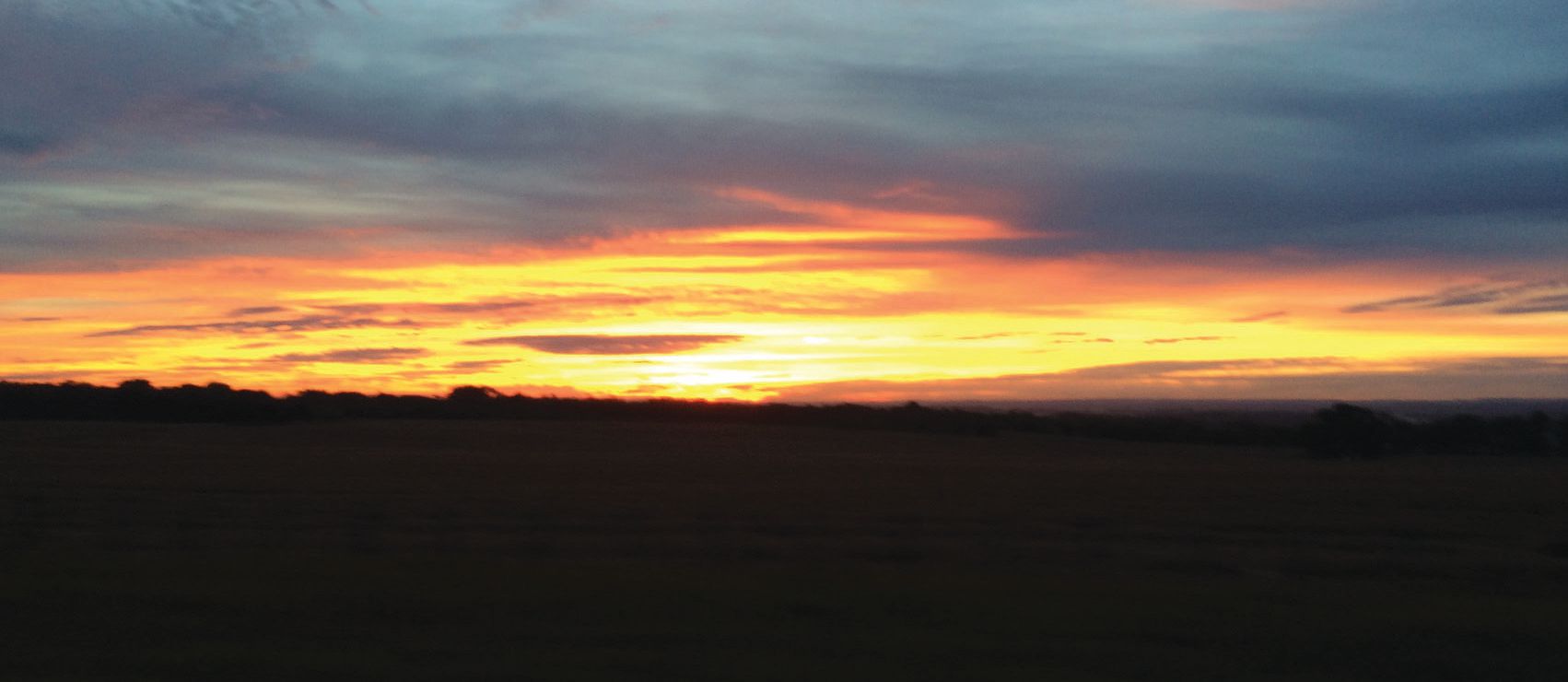Red sky at night
Evan Zabawski | TLT From the Editor November 2014
Sailor’s old adage helps validate oil analysis.

A red sky at night does indicate high pressure and stable air.
WHENEVER I EXPLAIN COMMON SOURCES OF SILICON ON AN OIL ANALYSIS REPORT, I usually delve into a discussion about the saying, “Red sky at night, sailor’s delight. Red sky in the morning, sailors take warning.” This simple rhyme holds up fairly well to explain how atmospheric conditions can lead to increased contamination in a lubrication system.
The saying has existed since biblical times, appearing in Matthew 16:2-3 as, “When it is evening, you say, ‘It will be fair weather; for the sky is red.’ And in the morning, ‘It will be stormy today, for the sky is red and threatening.’” It also appeared in the poem Venus and Adonis by William Shakespeare: “Like a red morn that ever yet betokened, Wreck to the seaman, tempest to the field, Sorrow to the shepherds, woe unto the birds, Gusts and foul flaws to herdmen and to herds.”
This saying is referring to the color of the sky when the sun is low and close to the horizon. As we already know, the sky appears blue due to blue light scattering as it hits air molecules. Blue scatters more than other colors because it is a slower and smaller wave. As we look closer to the horizon, the sky fades to a lighter blue or even to near white since we are looking through even more atmosphere, which has scattered and rescattered the blue light, as well as mixed it with reflected light off the Earth’s surface.
When the sky appears redder, it is due to the red light being scattered by larger dust and dirt particles, as well as water vapor and other aerosols. The red color is further intensified if these contaminants are concentrated by sinking air, which is caused by high pressure.
What adds validity to the saying is that within the middle latitudes (between the Arctic Circle and the Tropic of Cancer and between the Tropic of Capricorn and the Antarctic Circle), weather systems tend to travel from west to east. Since the sun rises in the east and sets in the west, the rising sun illuminates the approaching clouds and the setting sun illuminates departing clouds.
The saying is, therefore, true insomuch as a red sky at night does indicate high pressure and stable air coming from the west, which usually means good weather will follow. As well, a red sky in the morning is usually indicative of higher water content in the air, which is often a sign of rain. Of course, none of this holds true when the clouds move from south to north.
While the amounts of water and dust particles in the atmosphere may be good indicators of weather conditions, they can also tell us if we may expect higher than normal contamination levels in any open lubrication systems. The prairies, for instance, exhibit many magnificent sunrises and sunsets during planting and harvest seasons due to a greater disturbance of the topsoil during these activities. On the other hand, mountainous regions, or anywhere covered in snow during the winter months, tend to have very plain yellow sunrises and sunsets due to below-average amounts of particulate in the air.
These seasonal variances act as a reminder to those involved in stationary asset reliability to double check breathers and other exclusion devices that offer protection against airborne contaminants. Mobile systems are affected to a lesser degree, depending on their application. Many mining operations are consistently in areas of high contamination due to drilling, blasting or digging.
Dirt and dust’s composition includes silicon as the most prevalent of the measured elements. Therefore, this is usually the earliest warning that an asset has been contaminated. If left without any secondary protection such as filtration, these abrasive particles will lead to subsequent wear. Perhaps we should update the saying to: “Red sky at night, button up tight. Red sky in morning, breathers take warning.”
 Evan Zabawski, CLS, is the senior reliability specialist for Fluid Life in Edmonton, Alberta, Canada. You can reach him at evan.zabawski@fluidlife.com
Evan Zabawski, CLS, is the senior reliability specialist for Fluid Life in Edmonton, Alberta, Canada. You can reach him at evan.zabawski@fluidlife.com.